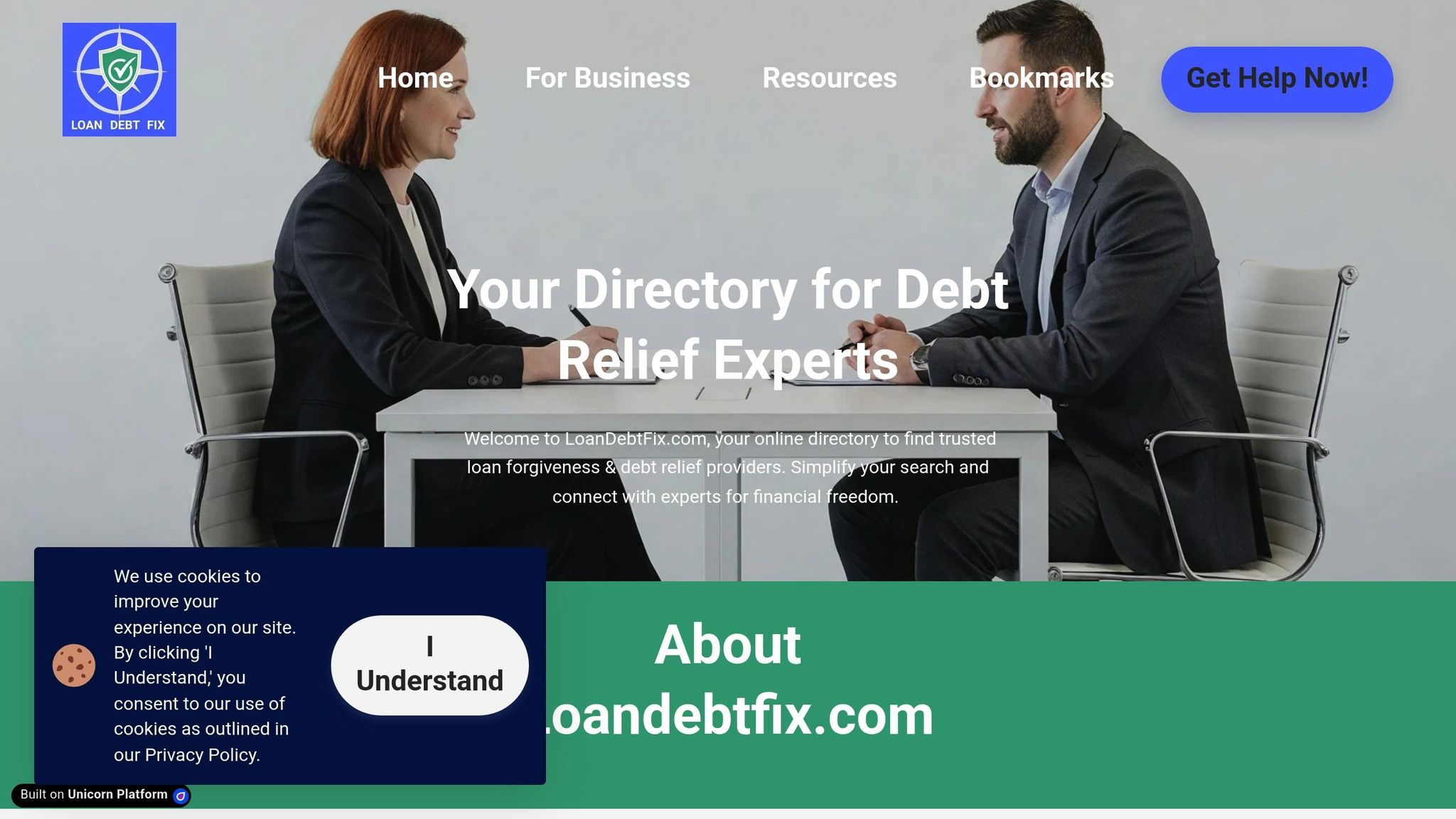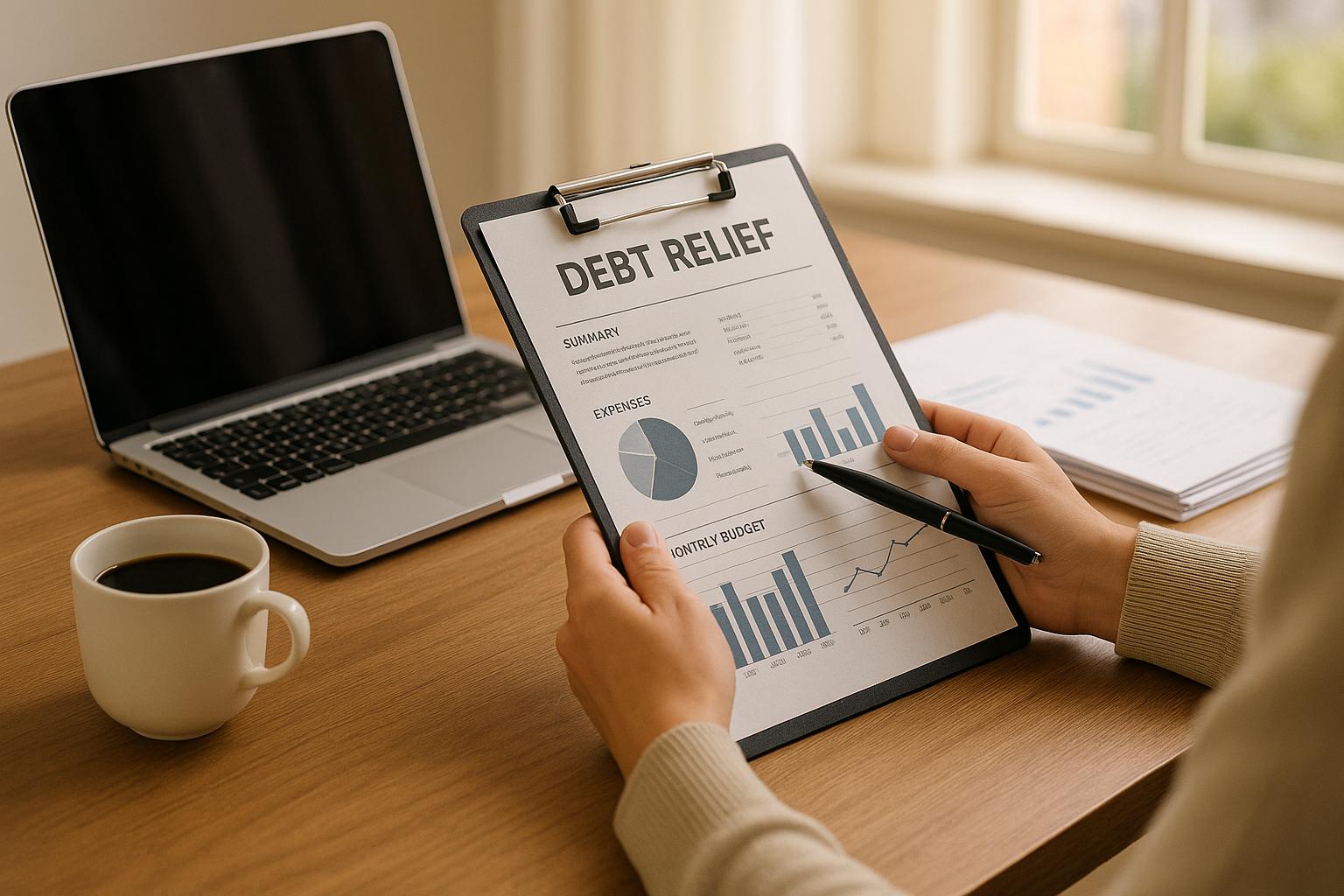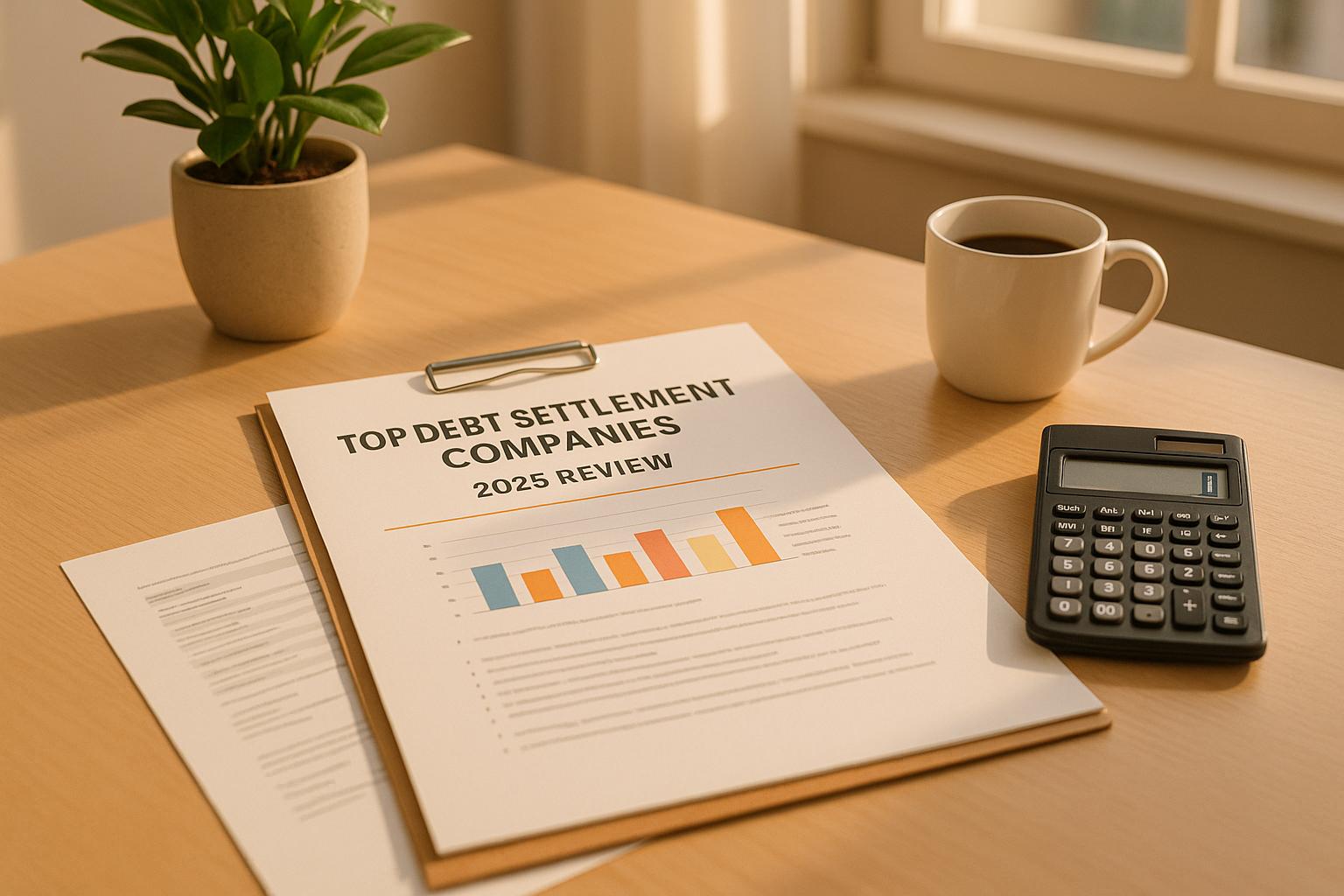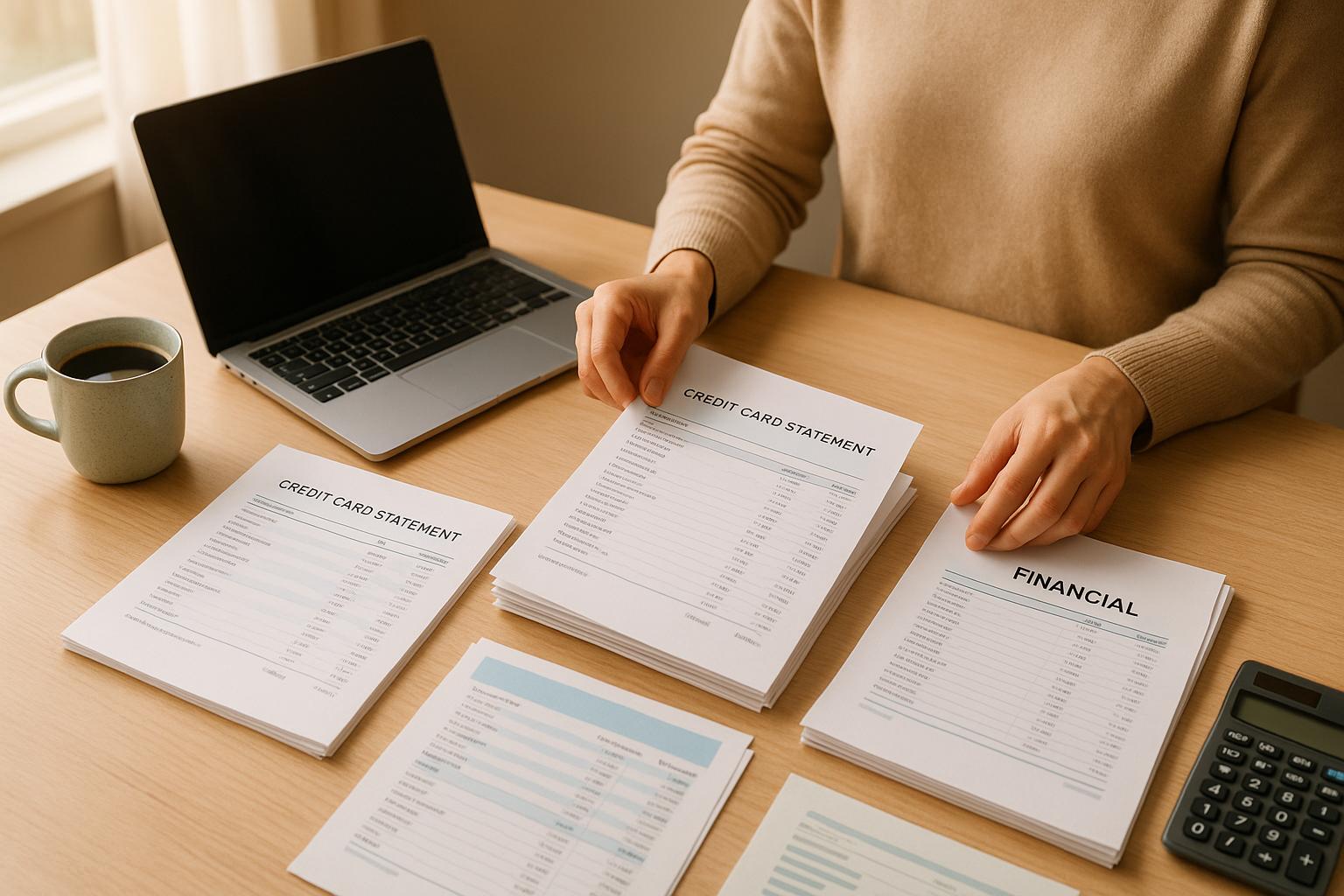As of 2025, over 42 million Americans owe $1.6 trillion in student debt. Many are falling behind on payments, with millions at risk of default. If you're overwhelmed by your loans, forgiveness programs can offer relief by reducing or eliminating what you owe.
Key Programs:
- Public Service Loan Forgiveness (PSLF): For government and nonprofit workers, forgiving debt after 10 years of payments.
- Income-Driven Repayment (IDR): Adjusts payments based on income, with forgiveness after 20–25 years.
- Teacher Loan Forgiveness: Up to $17,500 for educators in low-income schools.
- Borrower Defense to Repayment: For those misled by schools engaging in misconduct.
- Total and Permanent Disability (TPD) Discharge: Forgives loans for those unable to work due to disabilities.
- Closed School Discharge: Erases loans for students whose schools shut down.
- Temporary Expanded PSLF (TEPSLF): Addresses PSLF denials due to technicalities.
Quick Tips:
- Check eligibility: Most programs apply only to federal loans.
- Gather documents: Income proof, employment verification, and loan details are often required.
- Apply through StudentAid.gov: Avoid scams - federal programs are free to apply for.
These programs can help you regain financial stability and reduce the burden of student debt. Take action today by exploring which option fits your situation.
Public Service Loan Forgiveness: Overview & Updates | Spring 2025
Basic Requirements and Application Steps
Navigating the loan forgiveness process can feel overwhelming, but breaking it into manageable steps helps avoid unnecessary mistakes. Below, we’ll cover eligibility criteria, preparation tips, and submission guidelines to simplify your application journey.
Who Qualifies for Loan Forgiveness
Federal student loan forgiveness programs are designed for borrowers who meet specific criteria, such as having lower incomes, significant debt, or working in public service roles. The first step is confirming that your loans are federal, as private loans are not eligible for these programs.
Your eligibility often depends on your employment type and income level. For example, Public Service Loan Forgiveness (PSLF) requires full-time employment with qualifying organizations like government agencies, 501(c)(3) nonprofits, or other approved public service employers. On the other hand, Income-Driven Repayment (IDR) plans base payment calculations on your income and require you to recertify annually.
Most forgiveness programs also demand consistent payments over many years - typically between 10 and 25 years. If your loans are in default, you’ll need to consolidate or rehabilitate them before becoming eligible for forgiveness.
It’s important to note that some programs have exclusive requirements. For instance, you cannot simultaneously qualify for both Teacher Loan Forgiveness and PSLF; you’ll need to choose one path to pursue. Understanding these limitations early can save you time and effort.
Getting Ready to Apply
Before you apply, gather the necessary documents, such as loan statements, employment verification letters, tax returns, and other supporting materials.
If you’re applying for PSLF, the PSLF Help Tool is a great resource. It verifies your employer’s eligibility and automatically generates the required PSLF Form. Submitting this form annually - or whenever you switch employers - helps keep your application on track.
Keep digital records like payment receipts or monthly statements as proof of your payment history. Stay in touch with your loan servicer and use official government resources to verify details.
Seeking advice from experts can also help you avoid errors that could delay your application. Once your documents are ready, familiarize yourself with the submission process to ensure your forgiveness request is handled correctly.
Where to Submit Your Application
Most federal student loan forgiveness applications are submitted through StudentAid.gov, the official portal that connects directly with your loan servicer’s records.
For IDR plans, use the Department of Education’s online enrollment platform. This tool guides you through income verification and family size documentation. Remember, you’ll need to recertify your information every year to maintain your plan’s benefits.
PSLF applications, on the other hand, must be submitted through the PSLF Help Tool, which confirms your eligibility and generates the necessary forms. If you’re applying for Teacher Loan Forgiveness, follow your loan servicer’s specific instructions, as these applications are not processed through StudentAid.gov.
If your application is denied, don’t lose hope. The Department of Education offers an online form for reconsideration of PSLF or Temporary Expanded PSLF (TEPSLF) denials. Many denials are due to paperwork mistakes rather than ineligibility, so double-check your submissions.
The process can take several months, and persistence is key. Keep in mind that legitimate federal forgiveness programs are free to apply for, so avoid paying fees for assistance.
"You never have to pay for help with your federal student aid. Make sure you work only with ED and your loan servicers, and never reveal your personal information or account password to anyone" - Consumer Financial Protection Bureau.
7 Best Student Loan Forgiveness Programs in 2025
If you're navigating the maze of student loans, knowing your options for forgiveness can be a game-changer. Below are the top programs available in 2025, each with its own set of requirements and benefits. Understanding how these programs work can help you make an informed choice based on your financial and career goals.
Public Service Loan Forgiveness (PSLF)
PSLF is designed to forgive the remaining balance on Direct Loans after you've made 120 qualifying monthly payments while working full-time for a qualifying employer. Eligible employers include government agencies (federal, state, local, or tribal), 501(c)(3) charitable nonprofits, or service roles through AmeriCorps or Peace Corps. However, recent policy updates in March 2025 have tightened eligibility, excluding organizations that engage in activities deemed illegal, such as promoting illegal immigration, terrorism, or other prohibited actions.
To get started, use the PSLF Help Tool to confirm your employer's eligibility and generate the necessary forms. Employers can digitally certify your employment and submit the forms electronically to your loan servicer. It's a good idea to submit the Employment Certification for Public Service Loan Forgiveness form annually or whenever you change jobs.
Income-Driven Repayment (IDR) Forgiveness
IDR plans adjust your loan payments based on your income and family size, offering forgiveness for any remaining balance after 20–25 years of qualifying payments. All federal student loan borrowers are eligible for an IDR plan, with options like REPAYE (now called SAVE), PAYE, IBR, and ICR. Each plan calculates payments differently based on income levels.
You can enroll through the Department of Education's platform at StudentAid.gov. Be ready to provide proof of income and family size, and make sure to recertify your information every year to stay enrolled.
Teacher Loan Forgiveness
This program is tailored for educators working in low-income schools for at least five consecutive academic years. Teachers of math, science, or special education can qualify for up to $17,500 in forgiveness, while other highly qualified teachers may receive up to $5,000.
Qualifying schools are listed in the Department of Education's Teacher Cancellation Low Income Directory. After completing your five-year teaching commitment, submit the Teacher Loan Forgiveness Application, certified by your school’s chief administrative officer, to your loan servicer.
Borrower Defense to Repayment
If your school misled you or engaged in misconduct, the Borrower Defense program can discharge your loans. Qualifying cases include false advertising, misrepresentation of job placement rates, or other deceptive practices.
To apply, create an account on StudentAid.gov and complete the Borrower Defense application. Supporting documents like emails, advertisements, or course catalogs can strengthen your claim. The process can take up to three years, but there are no fees to apply.
Total and Permanent Disability (TPD) Discharge
TPD Discharge provides full loan forgiveness for borrowers unable to work due to a qualifying permanent disability. Forgiveness amounts often range from $60,000 to over $200,000, with some reaching $500,000.
To qualify, your disability must be certified by a physician, the Social Security Administration, or the Department of Veterans Affairs. Submit a TPD discharge application along with your documentation, and notify your loan servicer of your intent to apply. Once all documents are submitted, the review process typically takes 60–90 days.
Closed School Discharge
If your school shut down while you were enrolled or shortly after, you may qualify for a Closed School Discharge, which offers complete loan forgiveness.
In many cases, your loan servicer will automatically discharge your loans if you meet the criteria. If this doesn’t happen, contact your servicer to request a discharge.
Note: The Perkins Loan Cancellation program has been omitted from this guide due to insufficient supporting details in the source material.
Program Comparison Chart
Choosing the right student loan forgiveness program can feel overwhelming. Having a clear, consolidated view of your options makes it easier to align programs with your career goals and financial situation. Below is a helpful chart that summarizes key details to guide your decision-making.
Side-by-Side Program Details
Here’s a quick breakdown of some popular student loan forgiveness programs:
| Program | Eligibility Requirements | Time to Forgiveness | Maximum Forgiveness | Best For |
|---|---|---|---|---|
| Public Service Loan Forgiveness (PSLF) | Full-time work in government or qualifying nonprofit | 120 qualifying monthly payments (10 years) | Remaining loan balance | Government employees and nonprofit workers |
| Income-Driven Repayment (IDR) Forgiveness | Enrollment in an IDR plan (PAYE, REPAYE, IBR, or ICR) | 20–25 years of payments | Remaining balance after repayment period | Borrowers with lower incomes compared to their debt |
| Teacher Loan Forgiveness | Five consecutive years at a low-income school | 5 years | Up to $17,500 | Teachers in low-income schools |
| Borrower Defense to Repayment | Borrowers misled or defrauded by their schools | Varies | Full loan discharge plus potential refunds | Students who were victims of school misconduct |
| Total and Permanent Disability (TPD) Discharge | Unable to work due to a total and permanent disability | Immediate upon approval | Full loan discharge | Individuals with qualifying disabilities |
| Closed School Discharge | Enrolled or left within 180 days of the school closing without earning a degree | Often automatic | Full loan discharge | Students whose schools have shut down |
This table provides a snapshot of each program to help you determine which might fit your situation best.
Additional Notes for Consideration
- Keep in mind that Teacher Loan Forgiveness and PSLF cannot be used simultaneously for the same service period. If you’re eligible for both, carefully evaluate which program aligns better with your goals.
- Veterans with a service-related disability automatically qualify for loan forgiveness through the TPD discharge program, simplifying the process significantly.
- All federal forgiveness, cancellation, and discharge programs are free to apply for. To avoid scams, always use official resources like your loan servicer or StudentAid.gov.
These details can help you navigate the forgiveness landscape and create a strategy tailored to your needs.
sbb-itb-3a8c5bf
How LoanDebtFix Can Help

Dealing with student loan forgiveness programs can feel overwhelming. The paperwork, deadlines, and strict eligibility rules are enough to confuse anyone. That’s where LoanDebtFix steps in, connecting you with experienced debt relief providers who truly understand these programs.
Launched in 2023, LoanDebtFix offers a robust directory that links individuals to experts offering practical solutions. As mentioned earlier, understanding your forgiveness options is key - and LoanDebtFix supports this by providing expert guidance and actionable tools.
Finding Experts Through LoanDebtFix
LoanDebtFix takes the guesswork out of finding help. Its directory allows you to filter for experts based on location and the specific service you need, whether that’s Public Service Loan Forgiveness (PSLF) guidance, Income-Driven Repayment (IDR) enrollment, or borrower defense assistance.
Each provider profile includes essential details, such as their areas of expertise, experience, and the services they offer. This helps you quickly pinpoint professionals who specialize in your type of loans or forgiveness program. Plus, you can easily refine your search using filters for location and specific needs.
This efficient search process ensures you come prepared for a productive consultation.
Accessing Resources and Guides
LoanDebtFix doesn’t just connect you with experts - it also equips you with valuable resources. Their blog features easy-to-follow guides on everything from application steps and common mistakes to IDR calculations, PSLF requirements, and necessary documentation for various discharge programs.
With these resources in hand, you’ll be better prepared for consultations and more likely to achieve the results you’re aiming for.
These tools not only simplify the process but also help you stay informed, manage forgiveness programs effectively, and meet ongoing requirements with confidence.
Conclusion
Student loan forgiveness programs bring genuine relief to millions of Americans grappling with the weight of educational debt. These initiatives have already helped countless borrowers. By 2021, 476,631 students had their loans forgiven through federal programs, and as of 2024, about one in 10 federal student loan borrowers has benefited from some form of debt relief.
Key Takeaways
The seven forgiveness programs highlighted in this guide cater to different borrower needs, but they all aim to lift the financial strain of student loans. For instance, Public Service Loan Forgiveness (PSLF) has been a game-changer for many, with 662,000 qualified applicants between October 2021 and July 2023. This program forgives the remaining loan balance after 120 qualifying payments for those working in government or eligible nonprofit roles.
Income-Driven Repayment (IDR) forgiveness is another vital option, designed for borrowers with high debt-to-income ratios. It clears remaining balances after 20 to 25 years of payments. Educators serving in low-income schools can benefit from Teacher Loan Forgiveness, which offers up to $17,500 in relief.
It’s important to note that federal forgiveness programs are free to apply for and primarily target federal student loans, not private ones. These programs often focus on borrowers with lower incomes, significant debt, or careers in public service. While forgiven loans might be taxable at the state level, they are exempt from federal taxes under current regulations.
With this knowledge, you’re better equipped to take the next steps toward securing debt relief.
What to Do Next
The student loan landscape is constantly evolving, with policy changes and court rulings shaping repayment plans and forgiveness programs. Acting now is essential, especially as some political proposals could dismantle existing programs, potentially denying relief to over 3.6 million public service workers and adding $250 billion in student debt burdens.
Start by logging into StudentAid.gov to check your eligibility for forgiveness. If you work in government or for a qualifying nonprofit, use the PSLF Help Tool. Gather necessary documentation, including your FSA ID, financial records, employment verification, and, if applicable, your spouse’s details. Also, make sure your contact information is up to date with your loan servicer to avoid missing critical updates.
Submit your application as soon as possible to begin the process.
For additional assistance, consider reaching out to LoanDebtFix. Their specialists can guide you through the complexities of student loan forgiveness, ensuring you avoid common mistakes that might delay your application.
The journey to financial freedom from student loans begins with understanding your options and taking that first step toward the program that suits your situation best.
FAQs
What do I need to qualify for Public Service Loan Forgiveness (PSLF) in 2025?
To be eligible for Public Service Loan Forgiveness (PSLF) in 2025, you’ll need to meet these important criteria:
- Full-time employment with a qualifying employer, such as a government agency or a non-profit organization.
- Completion of 120 qualifying monthly payments through an eligible repayment plan, like an income-driven repayment plan.
- Continued employment with a qualifying employer when you apply for forgiveness and when it is granted.
These steps are crucial for PSLF eligibility. Make sure your employer and repayment plan align with the program’s requirements. If you’re uncertain, take time to review your loan details or consult a loan advisor to ensure you’re on the right path.
What makes Income-Driven Repayment (IDR) plans different from other student loan forgiveness programs, and what are their key benefits?
Income-Driven Repayment (IDR) Plans
Income-Driven Repayment (IDR) plans are designed to make student loan payments more manageable by basing them on your income and family size. This approach can significantly reduce your monthly payment amount. Plus, after making qualifying payments for 20 to 25 years, any remaining loan balance is forgiven. Unlike other forgiveness programs that come with strict requirements, IDR plans offer a more adaptable solution for borrowers.
What Makes IDR Plans Stand Out?
- Smaller monthly payments: Payments are adjusted to fit your income, easing financial strain.
- Avoiding default: Lower payments can help you stay current on your loans and avoid falling behind.
- Debt forgiveness: After years of consistent payments, the remaining balance is wiped clean.
These plans are particularly useful for borrowers dealing with a large amount of debt compared to their income or those facing financial challenges.
What should I do if my student loan forgiveness application is denied?
If your student loan forgiveness application gets denied, the first step is to carefully read the denial notice. This document will usually explain why your application was rejected. If the reason isn’t clear, reach out to your loan servicer for more details - they can help clarify what went wrong.
In cases where you think the denial was an error or you have new documentation that could strengthen your case, you might want to file an appeal or request reconsideration. Many forgiveness programs give borrowers the chance to challenge decisions, so it’s worth checking if this option is available to you.
Also, explore other forgiveness programs or repayment plans that might be a better match for your circumstances. There are several ways to manage or reduce student debt, so don’t stop searching for alternatives if one program doesn’t work out.



